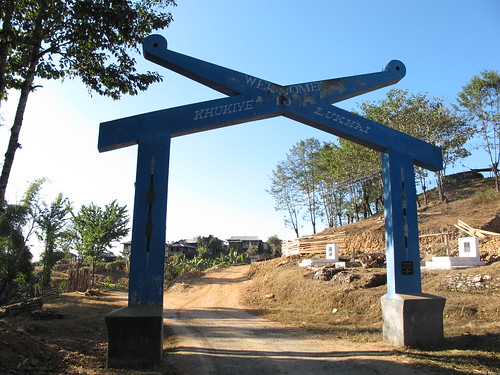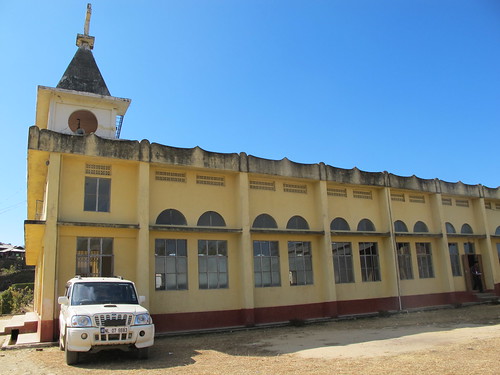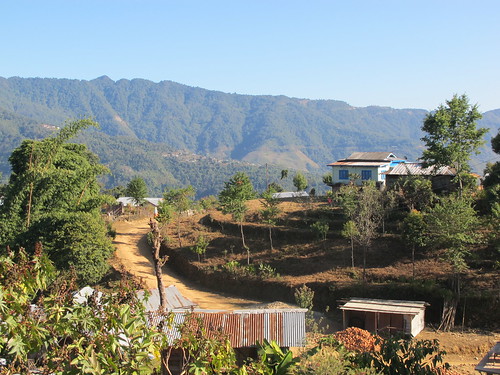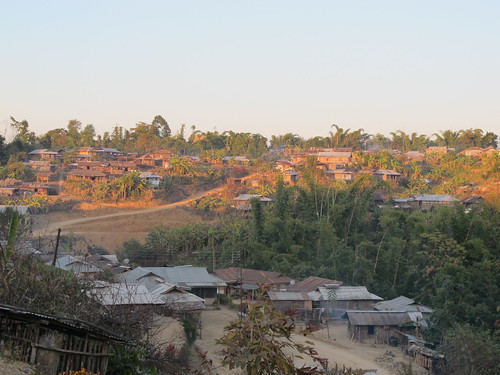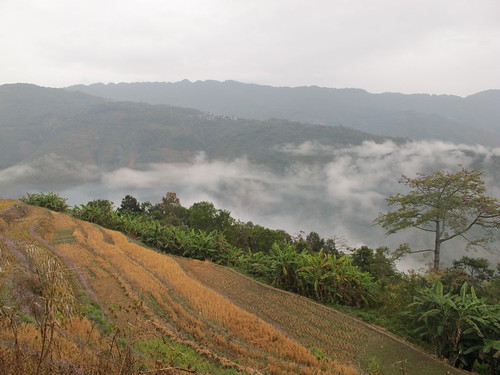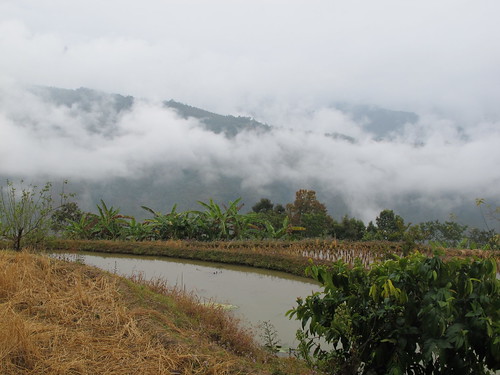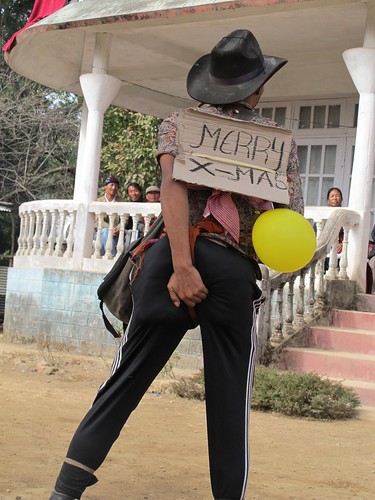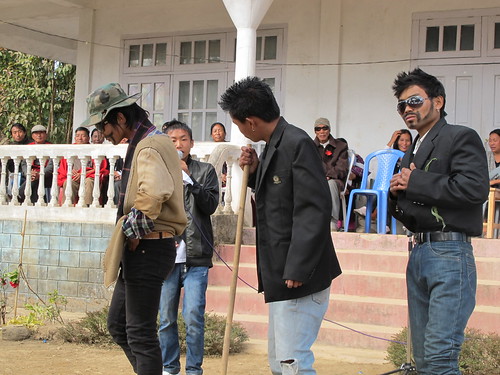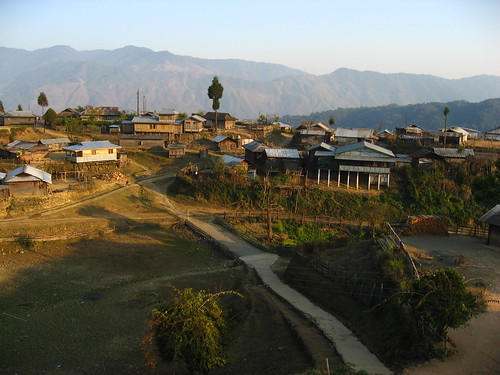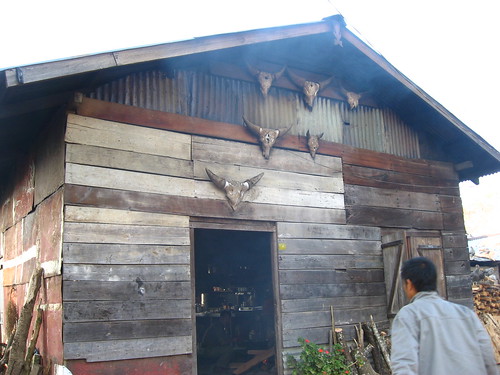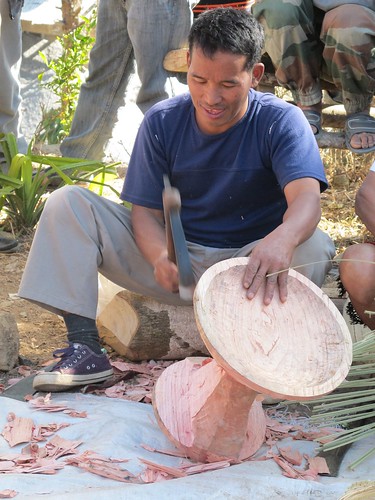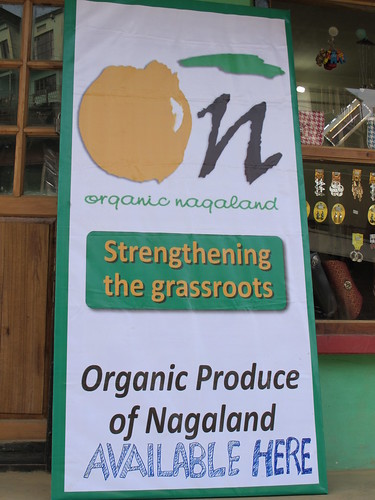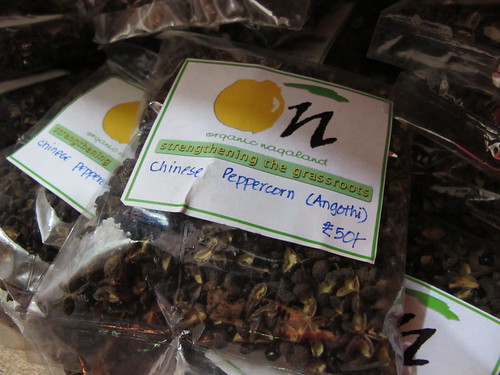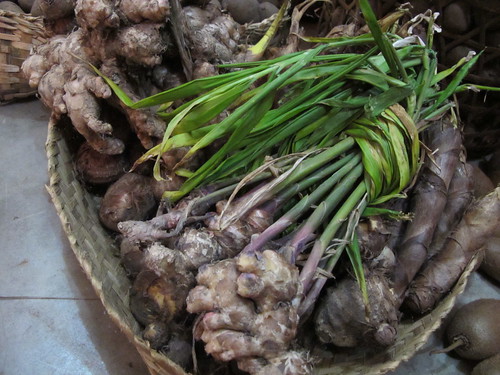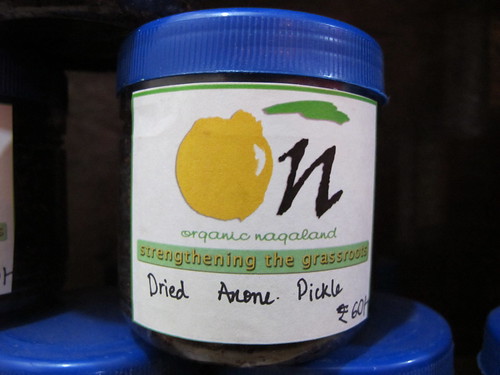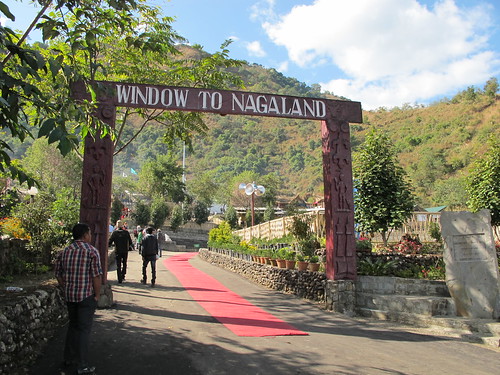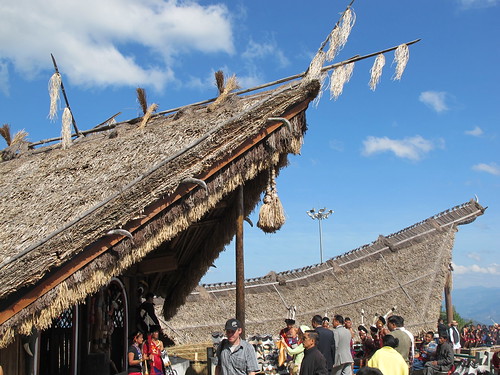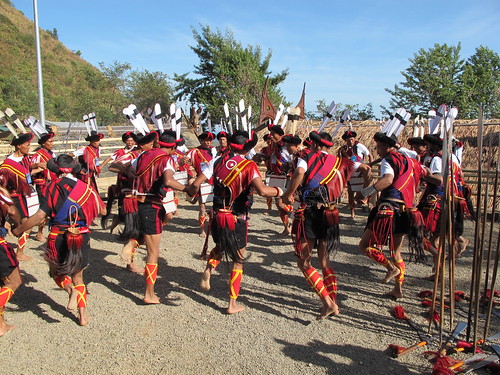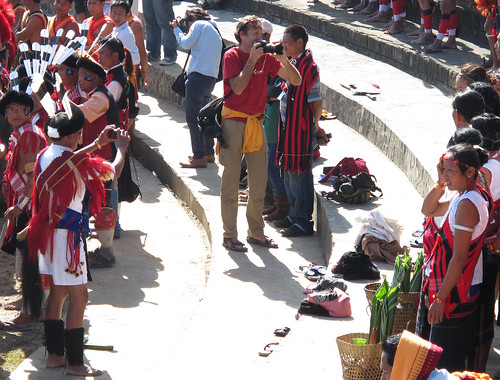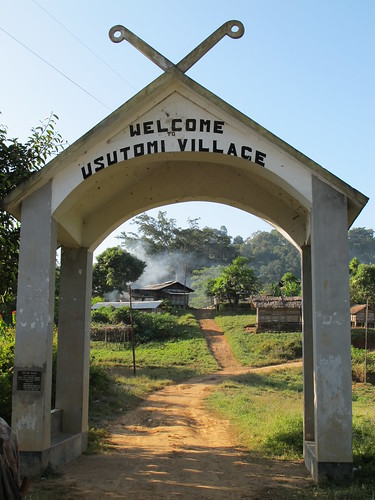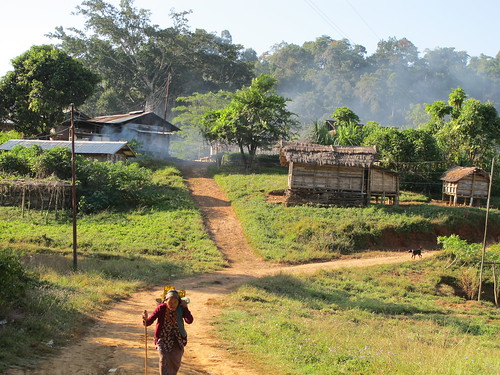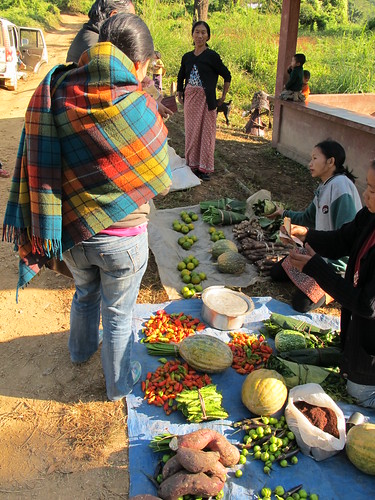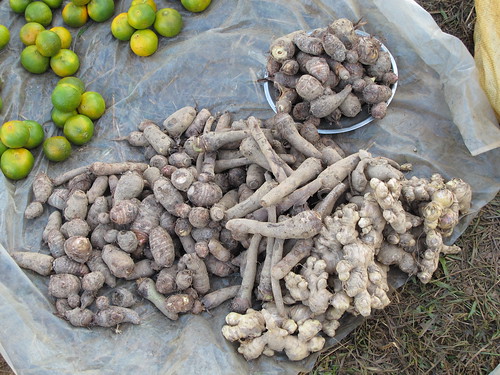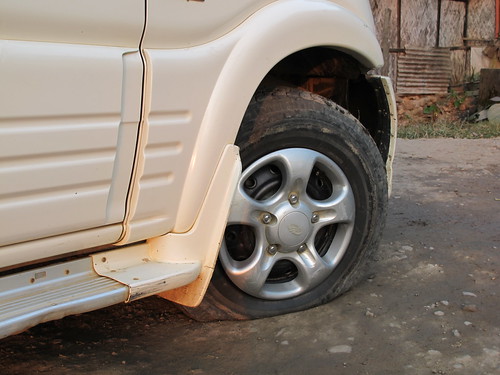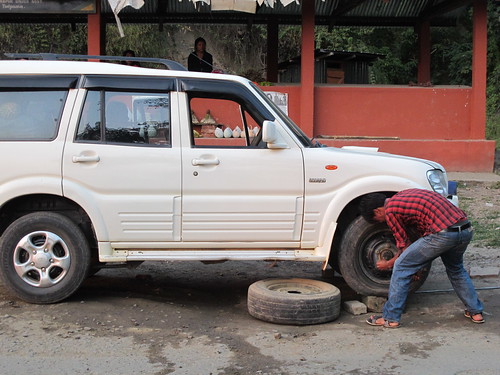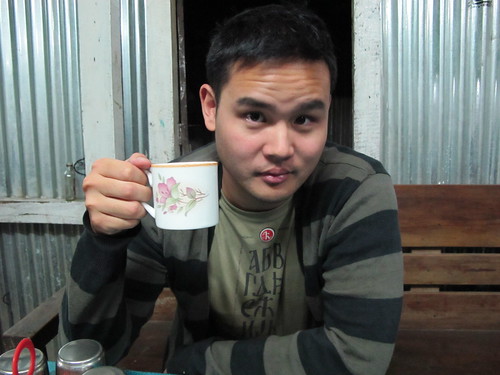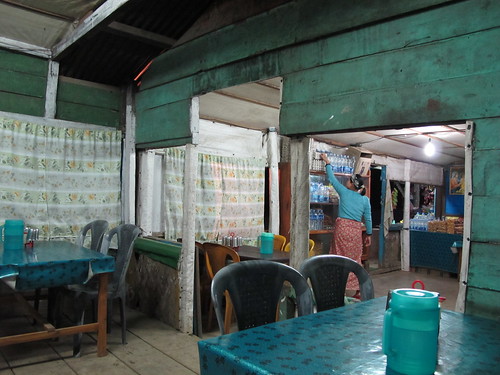In Nagaland, November to January really is the season for weddings here. Just ask my friend Cana who's been singing / planning / attending weddings for the past few weeks almost non-stop. I'd be interested to see what the official statistics are for the state (like the average no. of weddings per day in the month of December). Last year I ended up at a Rengma wedding, then a Lotha wedding in Kohima on the same day. I was also invited to an Angami wedding on Wednesday in Bara Bosti in Kohima, but my friend managed to organise a ride back to Zunheboto for me that morning.
All the major local papers have also reported on
Friday's 'mass wedding' at the Ao Baptist church in Dimapur as a means of keeping wedding costs low, and Yan Murry at the Naga Blog has written a post calling for more 'mass weddings' in the state:
Mass Weddings need to be encouraged in Naga society.
But if people want to have their big Western style weddings and have the money to afford them, who's going to stop them? It's a massive industry all over the world. My friends in Melbourne even run an online magazine dedicated to weddings (around the world) called
Little Wed Hen. (Sorry guys, I didn't feel like I knew the couple well enough to cover their wedding for your website.)
Anyway, on Thursday I had the privilege of attending a special wedding here in Zunheboto. Well, I didn't know the bride or the groom until the day before the ceremony, but I did know the wedding planner, the wedding celebrant, and friends from Australia had come back to attend the wedding (being the first cousin of the bride). I also met the wedding singer, who was in the car I was in coming to Zunheboto. I didn't realise he was a bit of a celebrity in these parts. (Sorry Alobo, if you're reading this.)
For the couple's privacy, I've decided not to post any photos of them or the ceremony itself. I've just added a few photos to give a sense of the place, and to show off the suit I bought recently in Dimapur. It still needs some tailoring, but it looked very decent for the price I paid. Also, it's a pain to upload photos at my current internet speed.
Back to the wedding: the bride is Sumi, which is why the wedding was held in Zunheboto. Her husband is Zeme, another Naga tribe. His home village is in Tamenglong District in Manipur. Such 'mixed' marriages aren't uncommon these days - one wedding I attended last year was a mixed one too. (I use scare quotes here because most outsiders / Indians from the mainland would probablu consider all Nagas to be the same anyway.) Mixed marriages is another interesting topic that people have spoken to me about (like 'why Sumi girls don't want to date Sumi guys'). Maybe in another blog post.
The wedding itself took place in North Point, Zunheboto, behind the government college and very close to where I usually stay when I'm here. It was a sunny afternoon and quite warm. The wedding tent was set up the day before in the bride's father's house.

I arrived with the wedding celebrant (whose house I'm staying in), his wife and daughter. (I've already said sorry to her if people thought I was the boyfriend.) For the record, it's nice to arrive with the wedding celebrant, because there's no chance of you missing the ceremony.
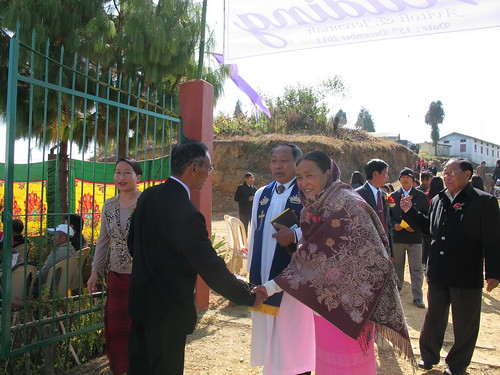
During such ceremonies, it's usually customary for all 'international' guests to be introduced to the entire congregation. Thankfully, I was spared the embarrassment this time, (since I barely knew the bride and groom), because the reverend didn't think of me as an outsider anymore.
There were the usual wedding vows. Alobo Naga, who's a friend of the bride, sang two songs and after the ceremony there was the usual feasting. I took some photos with the team in charge of the wedding decorations. They were busy most of the previous day and evening, as well as the morning of the wedding itself. (The night before, I had simply sat by the fire looking bored while they toiled away.)
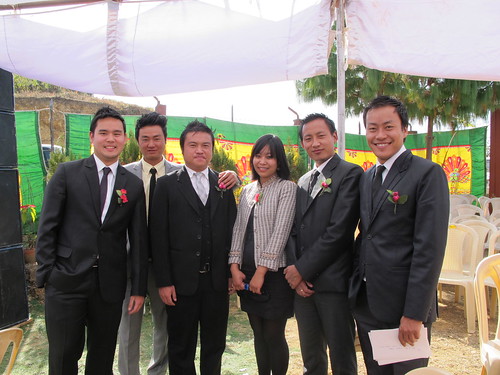
Finally, you might have noticed I've apologised quite a bit in this blog post. I suppose the last thing I should apologise for is the fact that because I live in Australia, I've missed most of my Singaporean friends' weddings over the past few years. Doesn't seem fair for me to attend the weddings of relative strangers, does it?
